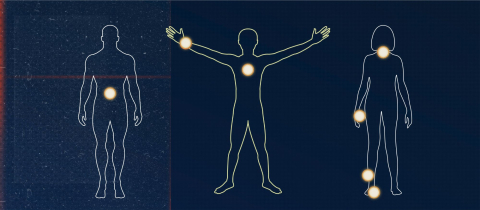As we get ready for winter here and watch news reports of unseasonable plummeting temperatures in some parts of North America, it is hard to be concerned about global warming. But climate change is here and it comes with baggage. Yes, there are some scientists who argue that humans are not responsible, and claim that we have experienced natural warming and cooling trends throughout history. They, however, are in the minority. The vast majority of climate change experts are convinced that the release of carbon dioxide and other greenhouse gases like methane and nitrous oxide are driving temperatures up with potentially a huge impact on wildlife, food production and the weather. Furthermore, when carbon dioxide dissolves in the oceans it forms carbonic acid which is detrimental to aquatic life.
The United Nations Intergovernmental Panel on Climate Change has just released its final report, summarizing 13 months of work, not by a handful of scientists, but by more than 800 experts. Natural forces have virtually nothing to do with the rising temperatures, they say. And those temperatures are rising with the chance that 2014 may turn out to be the warmest year on record. Where is all the carbon dioxide coming from? Burning of fossil fuels is the number one cause, followed by cement manufacture and “flaring,” the burning of gases that are byproducts of oil and gas production. Methane emissions, mostly from natural gas and animal agriculture are also having a large impact with further contribution from nitrous oxide released from nitrogen based fertilizer.
The Panel noted that glaciers are melting, Arctic sea ice is disappearing, sea level is rising, permafrost is thawing and that the number of hot days and nights are increasing. They warn that most plants, small mammals and ocean organisms cannot adapt fast enough to keep up with changes, and that a global temperature rise greater than 2 degrees Celsius will compromise food supplies everywhere. If nothing is done, they warn, the temperature is likely to rise by 4 degrees C by 2100.
The situation though, is not hopeless. Keeping greenhouse gases in the atmosphere below the equivalent of 450 parts per million of CO2 can prevent excessive warming. But how do we do this? There is no single measure that will solve the problem, but there are many possibilities. They include low-carbon electricity sources such as solar, tidal and wind power. Nuclear energy will have to play a role. Technical solutions for storing carbon dioxide need to be found. And there are small things we can all do. Change to low energy LED lights. Improve insulation. Turn down the heat and AC a notch. Car pool. Eat less. That’s right. Food has a huge environmental footprint. That chicken was raised in henhouses that were lit and climate controlled with electricity, was fed on corn grown with the aid of fertilizers and pesticides and ended up being packaged and trucked to stores. All of that requires energy input. And while you are at it, consider giving up bottled water and soft drinks. The energy expenditure to produce these is horrendous. Think about this as we wait for the first snowstorm to strike. It may be cold outside but climate change is still a hot topic.







